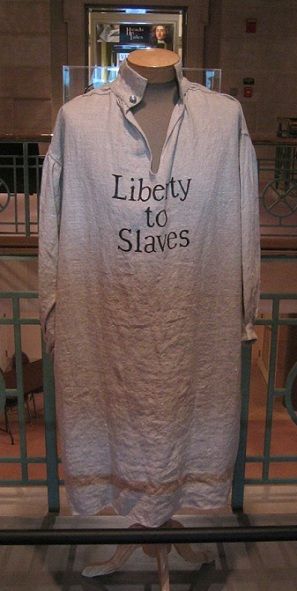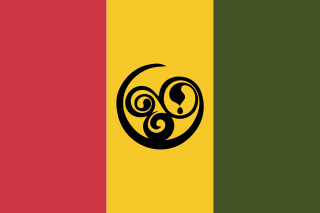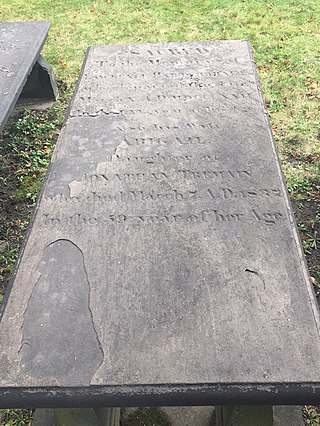
Liberia is a country in West Africa founded by free people of color from the United States. The emigration of African Americans, both freeborn and recently emancipated, was funded and organized by the American Colonization Society (ACS). The mortality rate of these settlers was the highest among settlements reported with modern recordkeeping. Of the 4,571 emigrants who arrived in Liberia between 1820 and 1843, only 1,819 survived (39.8%).

Creole peoples may refer to different ethnic groups around the world. The term has been used with various meanings, often conflicting or varying from region to region.

Sherbro Island is in the Atlantic Ocean, and is included within Bonthe District, Southern Province, Sierra Leone. The island is separated from the African mainland by the Sherbro River in the north and Sherbro Strait in the east. It is 32 miles (51 km) long and up to 15 miles (24 km) wide, covering an area of approximately 230 square miles (600 km2). The western extremity is Cape St. Ann. Bonthe, on the eastern end, is the chief port and commercial centre.
Afro-Caribbean people or African Caribbean are Caribbean people who trace their full or partial ancestry to Africa. The majority of the modern Afro-Caribbean people descend from the Africans taken as slaves to colonial Caribbean via the trans-Atlantic slave trade between the 15th and 19th centuries to work primarily on various sugar plantations and in domestic households. Other names for the ethnic group include Black Caribbean, Afro or Black West Indian or Afro or Black Antillean. The term Afro-Caribbean was not coined by Caribbean people themselves but was first used by European Americans in the late 1960s.

Black Loyalists were people of African descent who sided with the Loyalists during the American Revolutionary War. In particular, the term refers to men who escaped enslavement by Patriot masters and served on the Loyalist side because of the Crown's guarantee of freedom.
The liberated Africans of Sierra Leone, also known as recaptives, were Africans who had been illegally enslaved onboard slave ships and rescued by anti-slavery patrols from the West Africa Squadron of the Royal Navy. After the British Parliament passed the Slave Trade Act 1807, which abolished Britain's involvement in the slave trade, the Admiralty established the West Africa Squadron to suppress the trade in cooperation with other Western powers. All illegally enslaved Africans liberated by the Royal Navy were taken to Freetown, where Admiralty courts legally confirmed their free status. Afterwards, they were consigned to a variety of unfree labor apprenticeships at the hands of the Nova Scotian Settlers and Jamaican Maroons in Sierra Leone. During the 19th century, it has been estimated by historians that roughly 80,000 illegally enslaved Africans were liberated by the Royal Navy.

The back-to-Africa movement was a political movement in the 19th and 20th centuries advocating for a return of the descendants of African American slaves to the African continent. The movement originated from a widespread belief among some European Americans in the 18th and 19th century United States that African Americans would want to return to the continent of Africa. In general, the political movement was an overwhelming failure; very few former slaves wanted to move to Africa. The small number of freed slaves who did settle in Africa—some under duress—initially faced brutal conditions, due to diseases to which they no longer had biological resistance. As the failure became known in the United States in the 1820s, it spawned and energized the radical abolitionist movement. In the 20th century, the Jamaican political activist and black nationalist Marcus Garvey, members of the Rastafari movement, and other African Americans supported the concept, but few actually left the United States.

Edward Wilmot Blyden was an Americo-Liberian educator, writer, diplomat, and politician who was primarily active in West Africa. Born in the Danish West Indies, he joined the waves of black immigrants from the Americas who migrated to Liberia. Blyden became a teacher for five years in the British West African colony of Sierra Leone in the early twentieth century. His major writing were on pan-Africanism which later became influential throughout West Africa, attracting attention in countries such as the United States as well. His ideas went on to influence the likes of Marcus Garvey, George Padmore and Kwame Nkrumah.

Black Nova Scotians are an ethnic group consisting of Black Canadians whose ancestors primarily date back to the Colonial United States as slaves or freemen, later arriving in Nova Scotia, Canada, during the 18th and early 19th centuries. As of the 2021 Census of Canada, 28,220 Black people live in Nova Scotia, most in Halifax. Since the 1950s, numerous Black Nova Scotians have migrated to Toronto for its larger range of opportunities. The first recorded free African person in Nova Scotia, Mathieu da Costa, a Mikmaq interpreter, was recorded among the founders of Port Royal in 1604. West Africans escaped slavery by coming to Nova Scotia in early British and French Colonies in the 17th and 18th centuries. Many came as enslaved people, primarily from the French West Indies to Nova Scotia during the founding of Louisbourg. The second major migration of people to Nova Scotia happened following the American Revolution, when the British evacuated thousands of slaves who had fled to their lines during the war. They were given freedom by the Crown if they joined British lines, and some 3,000 African Americans were resettled in Nova Scotia after the war, where they were known as Black Loyalists. There was also the forced migration of the Jamaican Maroons in 1796, although the British supported the desire of a third of the Loyalists and nearly all of the Maroons to establish Freetown in Sierra Leone four years later, where they formed the Sierra Leone Creole ethnic identity.
Jamaican Maroons descend from Africans who freed themselves from slavery on the Colony of Jamaica and established communities of free black people in the island's mountainous interior, primarily in the eastern parishes. Africans who were enslaved during Spanish rule over Jamaica (1493–1655) may have been the first to develop such refugee communities.
Major John Jarrett was a Jamaican Maroon leader of the Maroons of Cudjoe's Town in Jamaica. He was most likely named after a neighbouring planter with a similar surname.

The Nova Scotian Settlers, or Sierra Leone Settlers, were African Americans who founded the settlement of Freetown, Sierra Leone and the Colony of Sierra Leone, on March 11, 1792. The majority of these black American immigrants were among 3,000 African Americans, mostly former slaves, who had sought freedom and refuge with the British during the American Revolutionary War, leaving rebel masters. They became known as the Black Loyalists. The Nova Scotian Settlers were jointly led by African American Thomas Peters, a former soldier, and English abolitionist John Clarkson. For most of the 19th century, the Settlers resided in Settler Town and remained a distinct ethnic group within the Freetown territory, tending to marry among themselves and with Europeans in the colony.

An independence referendum was held in Liberia on 27 October 1846. The result was 52% in favor, with independence being declared on 26 July 1847.

Liberia – Sierra Leone relations refers to the historical and current relationship between Liberia and Sierra Leone. The two countries signed a non-aggression pact in 2007 when Sierra Leonean President Ernest Bai Koroma took office. In January 2011, an African diplomat described relations as "cordial".
Black nationalism is a nationalist movement which seeks liberation, equality, representation and/or self-determination for black people as a distinct national identity, especially in racialized, colonial and postcolonial societies. Its earliest proponents saw it as a way to advocate for democratic representation in culturally plural societies or to establish self-governing independent nation-states for black people. Modern black nationalism often aims for the social, political, and economic empowerment of black communities within white majority societies, either as an alternative to assimilation or as a way to ensure greater representation and equality within predominantly Eurocentric or white cultures.
For a history of Afro-Caribbean people in the UK, see British African Caribbean community.

The Sierra Leone Creole people are an ethnic group of Sierra Leone. The Sierra Leone Creole people are descendants of freed African-American, Afro-Caribbean, and Liberated African slaves who settled in the Western Area of Sierra Leone between 1787 and about 1885. The colony was established by the British, supported by abolitionists, under the Sierra Leone Company as a place for freedmen. The settlers called their new settlement Freetown. Today, the Sierra Leone Creoles are 1.2 percent of the population of Sierra Leone.

The Easmon family or the Easmon Medical Dynasty is a Sierra Leone Creole medical dynasty of African-American descent originally based in Freetown, Sierra Leone. The Easmon family has ancestral roots in the United States, and in particular Savannah, Georgia and other states in the American South. There are several descendants of the Sierra Leonean family in the United Kingdom and the United States, as well as in the Ghanaian cities of Accra and Kumasi. The family produced several medical doctors beginning with John Farrell Easmon, the medical doctor who coined the term Blackwater fever and wrote the first clinical diagnosis of the disease linking it to malaria and Albert Whiggs Easmon, who was a leading gynaecologist in Freetown, Sierra Leone. Several members of the family were active in business, academia, politics, the arts including music, cultural dance, playwriting and literature, history, anthropology, cultural studies, and anti-colonial activism against racism.

Americo-Liberian people, are a Liberian ethnic group of African American, Afro-Caribbean, and liberated Africans. Americo-Liberians trace their ancestry to free-born and formerly enslaved African Americans who emigrated in the 19th century to become the founders of the state of Liberia. They identified themselves as Americo-Liberians.
The African-American diaspora refers to communities of people of African descent who previously lived in the United States. These people were mainly descended from formerly enslaved African persons in the United States or its preceding European colonies in North America that had been brought to America via the Atlantic slave trade and had suffered in slavery until the American Civil War. The African-American diaspora was primarily caused by the intense racism and views of being inferior to white people that African Americans have suffered through driving them to find new homes free from discrimination and racism. This would become common throughout the history of the African-American presence in the United States and continues to this day.











